Tips For Writing Black Characters
Tips for writing black characters
Day-to-day practical and minor stuff, specially regarding hair
If you have curly/afro hair then you are only going to need to wash it one or twice a week
But it can take a while. When I had long hair it used to take me 2h in the bathroom to properly wash it. That's why I only did it once a week. But it really will depend of the thickness and lenght of their hair.
It can be a little harder to find products for their hair, because straight/wavy hair products don't work on ours
If you wash curly hair many times a week it will eventually lose its nutrients, differently from straigh hair
If your character originally had curly hair but straightened it, it's probably going to look a little drier than naturally straight hair. it's a case-case scenario, though
If they have a skin care routine or want one they'll also need products made specifically for black skin
Your character is not immune to sunburns. It's harder to see if it gets red depending on how dark their skin is, but it's there. The more melanin they have, the more protected from the sun they are, but it's not gonna 100% prevent them from getting sunburnt.
Oh, and it can be pretty hard to dye it because first, if your hair is very dark, you have to decolor it, and depending on how black it is it can take a while and a few tries to get in a tone good for dying.
If they have long hair they're probably going to take a while combing it because you have to apply the hair cream lock by lock
They may have a haircare routine every month or so. Not everybody does it but if your character is disciplined and wants their hair to be extra healthy and neat they'll probably have one
If they care a lot about their appearence they'll probably have a lot of hair brushes of different types because depending on your brush you can comb it in a variety of ways, making your hair look fuller, making the curls look defined, etc.
More Posts from Writersreferencez and Others
Body language cues for a few emotions
Happiness:
Smiling genuinely, with crinkles around the eyes.
Open body posture, with relaxed arms and shoulders.
Leaning forward slightly towards the person or object of interest.
Making eye contact with a warm and engaged expression.
Anger:
Tightened jaw and clenched fists.
Furrowed brows and narrowed eyes.
Standing or sitting with a rigid and tense posture.
Pointing fingers or aggressive gestures.
Raised voice or speaking through gritted teeth.
Sadness:
Downcast eyes and a drooping posture.
Slumped shoulders and shallow breathing.
Avoiding eye contact and withdrawing from social interaction.
Sighing or a subdued tone of voice.
Tearfulness, with watery or red eyes.
Fear:
Widened eyes with dilated pupils.
Raised eyebrows and a tense facial expression.
Frozen or rigid body posture.
Backing away or seeking physical distance from the perceived threat.
Trembling or shaking, especially in the hands or legs.
Surprise:
Raised eyebrows and widened eyes.
Mouth slightly agape or forming an "O" shape.
Leaning forward or recoiling backward in response to the surprise.
Quick inhalation or gasp of breath.
Rapid blinking or blinking more than usual.
Disgust:
Curling the upper lip or wrinkling the nose.
Narrowing the eyes and raising the upper eyelids.
Turning the head away or physically distancing oneself from the source of disgust.
Covering the mouth or nose with the hand or a tissue.
Expressing verbal disgust through phrases like "ew" or "yuck."
These are just some examples, and individuals may display variations in their body language based on their personality, cultural background, and the specific context of the situation.
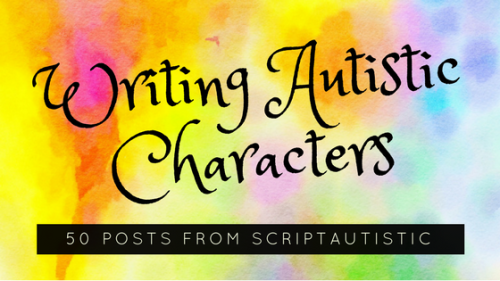

Writing Autistic Characters: 50 posts from scriptautistic
Happy Nanowrimo! In honour of national novel writing month 2017 we have put together this list of 50 of the most useful questions and answers from our blog this year. We hope you find them useful - happy writing!
-the scriptautistic mods
Meta
Our masterpost list
Finding an autistic sensitivity reader or beta-reader for your story
How to research autism without falling for tropes
How do I incorporate a character being autistic into the plot without making it be about them being autistic?
Autism resources
Representation
What sorts of characters would you like to see more of?
What are common stereotypes about autistic characters?
Do you have any advice to keep from infantilizing an autistic character?
Is it ok to write ASD characters that are not loved and accepted straight away?
Would it be bad if I make a non-human character autistic?
How do y'all feel about a story about an autistic guy who grows to dislike his autism?
Comorbidities
Similarities and differences between OCD and ASD
What is the difference between down syndrome and autism?
Encouraging abused children to stim again (effects of child abuse)
Are autistic people more likely to get migraines?
Tips for writing an autistic character in a psychiatric hospital?
The effect of a mental breakdown on a character’s routines
Emotions and empathy
What does hyperempathy feel like?
What would a low-empathy character feel and do when trying to comfort someone?
Showing love without saying “I love you”
How would my character use facial expressions?
Sensory sensitivities
What does understimulation feel like?
How might a person with sensory sensitivities cope with living in an unpleasant environment?
Can a character’s autistic traits change as they get older?
How does it feel to have auditory processing disorder?
Why would an autistic person might hit their head when overloaded?
Stimming
How can I write stims?
What does stimming feel like?
What unobtrusive stims could my character use?
Would a character stim differently depending on their emotions?
What is the effect of repressing their stims?
Education
Does autism give disadvantages for certain subjects at school?
Is it realistic to send someone with autism to a special needs school?
Ableism
Well-intentioned but rude neurotypical people
Bad therapy
Might a police officer consider an autistic person a threat if they were having a meltdown?
Communication
What might cause my character to be temporarily nonverbal?
What are some causes for an autistic person being nonverbal?
Might my character use filler words like “um” and “er”?
Could an autistic character pick up on sarcasm?
Could you use signing to communicate with an autistic toddler?
Other
Is it possible for a character’s family/friends to not suspect that the character is autistic until adulthood?
A character’s friends asking them to stop infodumping
How to write a sex scene with an autistic character
What problems might my character have around keeping a pet?
What could be some difficulties with being an autistic cop?
Flying and being at the airport while autistic
Fun posts
Stim toys in a post-apocalyptic setting
Accommodations for an autistic crewmember on a space station
What might an autistic society look like?
someone in a fanfic: s-stutters in embarrassment
me, closing the tab: sorry I must go

More bits of writing discussion
Showing 'Jealousy' in Writing
Eyes narrowing with a sharp, intense stare.
Clenched jaw and pursed lips.
Crossing arms defensively.
Making snide or sarcastic remarks.
Glancing repeatedly at the object of jealousy.
Trying to outdo or one-up the rival.
Faking a smile that doesn’t reach the eyes.
Speaking in a tense, clipped tone.
Avoiding eye contact with the person they’re jealous of.
Drumming fingers impatiently on a surface.
Feeling a burning sensation in the chest.
Sighing loudly or rolling their eyes.
Gritting teeth and taking deep, forced breaths.
Biting their lower lip hard.
Tapping foot incessantly.
Passive-aggressively commenting on the situation.
Mimicking or mocking the rival’s behavior.
Frequently changing the subject away from the rival.
Feeling a knot tighten in their stomach.
Casting resentful, sidelong glances.
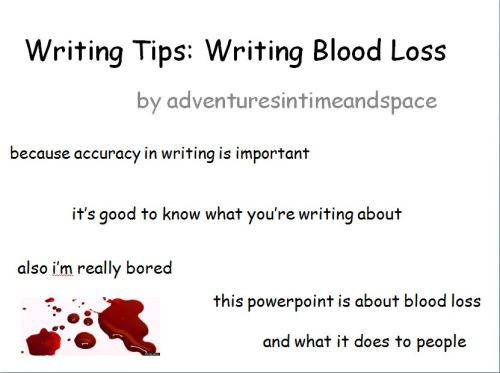
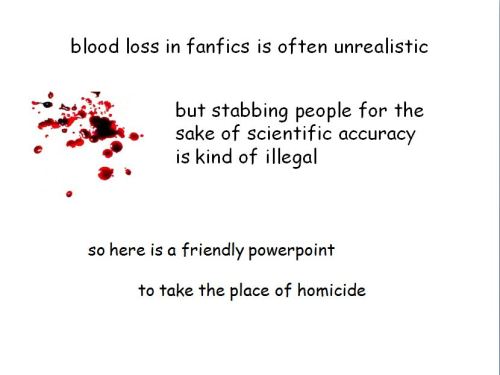

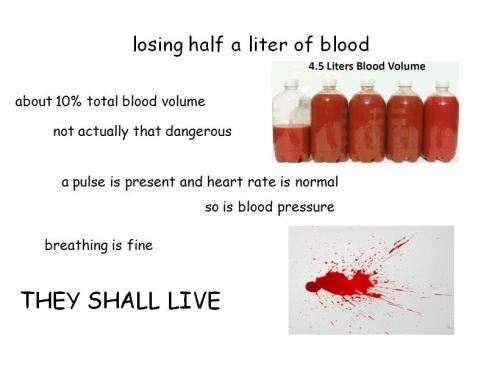
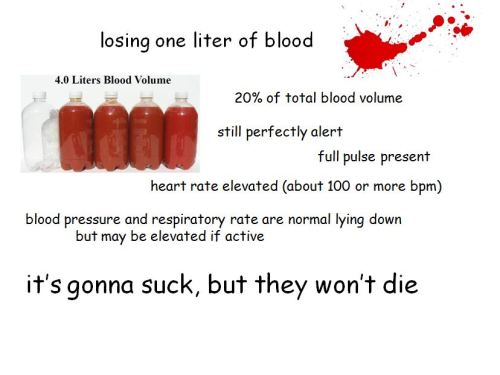
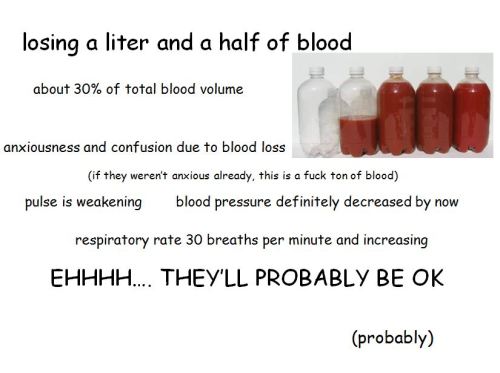



Here are some scientific facts about blood loss for all you psychopaths writers out there.
Symbolism in Writing
Weather Symbolism
Rain: cleansing, sadness, renewal, obstacles
Sunshine: happiness, hope, clarity, energy
Storms: conflict, turmoil, dramatic change
Snow: purity, stillness, coldness, isolation
Fog: confusion, mystery, uncertainty
Wind: change, freedom, unrest, communication
Animal Symbolism
Eagle: freedom, vision, strength, courage
Lion: bravery, power, leadership, pride
Dove: peace, love, innocence, spirituality
Wolf: loyalty, cunning, survival, community
Snake: transformation, danger, temptation, wisdom
Butterfly: transformation, beauty, impermanence
Plant Symbolism
Rose: love, beauty, passion, secrecy
Oak Tree: strength, endurance, wisdom
Willow Tree: sadness, flexibility, resilience
Lotus Flower: purity, enlightenment, rebirth
Ivy: friendship, fidelity, eternity
Cactus: endurance, protection, warmth
Object Symbolism
Mirror: self-reflection, truth, illusion
Key: opportunity, secrets, freedom
Bridge: connection, transition, overcoming obstacles
Candle: hope, spirituality, life, guidance
Clock: time, mortality, urgency
Mask: disguise, deception, concealment
Number Symbolism
One: beginnings, unity, individuality
Two: partnership, balance, duality
Three: creativity, growth, completeness
Four: stability, order, foundation
Five: change, adventure, unpredictability
Seven: mystery, spirituality, luck
Season Symbolism
Spring: renewal, birth, growth, hope
Summer: vitality, abundance, joy, freedom
Autumn: change, maturity, decline, reflection
Winter: death, stillness, introspection, endurance
Light and Darkness Symbolism
Light: knowledge, purity, safety, enlightenment
Darkness: ignorance, evil, mystery, fear
Shadow: the unconscious, secrets, mystery
Twilight: ambiguity, transition, mystery
Element Symbolism
Fire: passion, destruction, energy, transformation
Water: emotion, intuition, life, change
Earth: stability, grounding, fertility, growth
Air: intellect, communication, freedom, change
One of the best tips for writing descriptions of pain is actually a snippet I remember from a story where a character is given a host of colored pencils and asked to draw an egg.
The character says that there’s no white pencil. But you don’t need a white pencil to draw a white egg. We already know the egg is white. What we need to draw is the luminance of the yellow lamp and the reflection of the blue cloth and the shadows and the shading.
We know a broken bone hurts. We know a knife wound hurts. We know grief hurts. Show us what else it does.
You don’t need to describe the character in pain. You need to describe how the pain affects the character - how they’re unable to move, how they’re sweating, how they’re cold, how their muscles ache and their fingers tremble and their eyes prickle.
Draw around the egg. Write around the pain. And we will all be able to see the finished product.
Showing 'Exhaustion' in Writing
Heavy eyelids, struggling to stay open.
Slumping shoulders, barely able to hold themselves up.
Dragging feet with each step.
Speaking in a slow, slurred manner.
Dark circles under the eyes.
Yawning frequently and deeply.
Head nodding forward, trying to stay awake.
Leaning heavily against walls or furniture.
Rubbing eyes and face with hands.
Deep, weary sighs escaping lips.
Wincing at bright lights or loud sounds.
Staring blankly ahead, unable to focus.
Weak, unsteady movements.
Muttering incoherently to themselves.
Falling asleep in unusual places.
Lack of response or delayed reactions.
Propping their head up with their hand.
Collapsing onto the nearest available surface.
Swaying slightly on their feet.
Barely lifting their head to speak or listen.
The Editing Agenda: Those Darn Dashes

When it comes to formatting and punctuation issues, hyphens and dashes take the cake. Their use in books is incredibly inconsistent, which leads to a lot of confusion for anyone trying to learn them. This article will give a thorough breakdown of each kind and their uses as they pertain to fiction. Keep in mind that the rules I’m covering are the ones that are the most beneficial for fiction writing—there are some that won’t be addressed in this post. And all rules mentioned are based on The Chicago Manual of Style, 16th Edition.
Hyphens
Phrasal Adjectives
Phrasal adjectives are a short group of words (usually two but sometimes three or more) that link together to modify another noun. They typically precede the noun and are very common in fiction writing.
Example 1: rose-colored glasses
Example 2: four-chambered heart
A fantastic resource for this can be found on The Chicago Manual of Style website: http://www.chicagomanualofstyle.org/16/images/ch07_tab01.pdf
This chart shows you the breakdown of various combinations of adjectives and how they should be punctuated, including permanently hyphenated words and exceptions. The CMOS advises following Merriam-Webster’s dictionary for determining which words and phrases should always be hyphenated. Some of examples of this are the words life-form, run-down (not to be confused with rundown, which holds a different meaning), and short-lived.
Compound Name
Hyphens are also used for compound names, including surnames, first names, and other names.
Example 1: Merriam-Webster
Example 2: Mary-Kay
Example 3: Theta-Gamma
Word Division
The most common word division breaks where you’d find hyphens would be line breaks, syllable breaks (often used for pronunciation purposes), and prefixes and suffixes. Which isn’t all that common in fiction writing. However, you will often see it in dialogue, particularly with stuttering.
Example: “W-w-where’d you l-l-leave it?” Tom asked.
Separators
Hyphens can also be used to separate letters and numbers. That’s that type of thing you see with phone numbers, ID numbers, and the like. However, a great use for separation hyphens in fiction writing if when have a word that you need to spell out completely or partially.
Example: The sign read: “C-A-U-T.” The rest had long worn off.
En Dashes
Dates, Times, and Page Numbers
The en dash’s main purpose is to replace the word to. The most typical occurrence of this would be with dates, times, and page numbers.
Example 1: He held office from 1929–1932.
Example 2: The event is Saturday, 2:30p.m.–4:30p.m.
Example 3: Tonight’s assignment is to read pages 32–45.
You also might see this with scoring/votes and with an unfinished number range.
Example 4: We won our last game 13–2.
Example 5: The magazine (2003–) has produced six volumes so far.
However, you should always use the word “to” instead of an en dash if “from” precedes the range.
Example 6: He joined us from 11a.m. to 12p.m. but had to leave for lunch after that.
Directions and Compound Adjectives
En dashes are also sometimes used with words, as can be the case with directions.
Example 1: I took the London–Paris train last week.
And sometimes—very rarely—an en dash is used with compound adjectives. This is where it gets tricky because the intended meaning can often get muddled by using this method, so it’s usually best to reword and find a more elegant solution when possible.
Example 2a: I’d like to find more Taylor Swift–style music.
Example 2b: I’d like to find more artists like Taylor Swift.
Version 2b of the above example flows much better and is less confusing than the first, so it’s definitely the better choice.
And with two sets of compound adjectives where the sets are acting as coordinate adjectives to each other, a comma is the best option.
Example 3: This run-down, high-maintenance property will end up costing a lot of money.
Universities
The last use of en dashes is one that you probably won’t find in most fiction writing, but it’s useful to know nonetheless. You will sometimes find universities with multiple campus locations using an en dash to include the location name.
Example: I put my application in for Fordham University–Westchester.
Em Dashes
Em dashes are used to set off phrases and clauses in a manuscript that require an abrupt break, either to draw attention to it or because there is a large shift in the train of thought. This is one of the most useful tools an author has in fiction writing when it’s used correctly and sparingly. Note that em dashes should NOT be substituted with ellipses; the two serve different purposes.
Em Dashes vs. Ellipses
Em dashes are used for interruption or to set off an explanatory element. An ellipsis is used to indicate hesitation or trailing off.
Example 1: “Lucy, where did you put—”
“It’s none of your business!” Lucy shouted from the other room.
Example 2: I stumbled down the stairs—the power had gone out earlier that evening—before I found my way to the bathroom.
Example 3: “I don’t know…” I admitted. “I hadn’t really thought much about it.”
Interrupted Thoughts
Sometimes the interruptions can come in the form of narrative thoughts.
Example: Justin’s feet pounded against the ground as he blazed down the trail. Awesome. If he kept up the pace, he’d beat—a tree root caught his foot, and he was sent sprawling into the dirt.
And if you have a character that is having trouble forming a sentence due to the circumstances at hand and/or heighted emotions, em dashes can be used to indicate stammering between words (not syllables).
Example: “What I meant was—why can’t we—oh, just forget it,” Julie spat out.
Words and Phrases
An em dash can also be used to set off noun or pronoun at the beginning of the sentence.
Example: Cowards—they were the ones who sought power.
Another common use for the em dash is before the phrases “namely,” “that is,” “for example,” and others similar to those.
Example: We spent most of the afternoon in the garden—that is, until the heat got to be unbearable.
Note: You should never use em dashes within or immediately following an element that already has a set of em dashes. Not only would this look terrible aesthetically, but it could also cause potential misinterpretation.
Interrupted Dialogue
The last use of em dashes for fiction is probably one of the trickiest, but it can also be the most useful. If you have a line of dialogue that is split up by an action in the middle, you can use em dashes to set off that action.
Example 1: “Well, the thing is”—Tommy quickly turned his attention to his feet—“it’s just not working out between us.”
Note that the em dashes go outside of the quotation marks in such a case, and the quotation is a continuous line of dialogue that is being split. The first word of the dialogue after the split should be lowercase. You can’t use this method if you have two separate sentences that have an action in between. In that situation, you’d use periods.
Example 2: “You really mean it.” I could hear my voice catch in my throat. “I just don’t understand what happened.
Two-Em Dash
One type of em dashes that is not commonly used in fiction writing that is probably my favorite is the 2-em dash. The 2-em dash is used to omit words or parts of words that are missing or illegible, or to conceal a name. Two em dashes are most useful for the genres of fantasy, thriller, and mystery, where characters might come across documents that have damage to them. The example below is from a snippet of a work in progress of mine: book one of the Ansakerr series.
My dearest I——,
If you are reading this, I have long since p—— away. I can only pray that my —— box and this letter have fallen into your hands and your hands alone. There is much you have yet learn to about me. There is still a D——k O—— out there, one more dangerous than you can imagine. For now, you are protected, but be on your toes, my girl. One day soon, I fear the p—— will fade, and you’ll need to be ready. He is coming.
The key will lead you to A——. It will hold the answers you’re looking for.
Deepest love and affection,
Grandma Bea
Notice that most of the missing parts are for key elements, including names, places, and very specific items that are clearly key for the plot. If you craft these parts well, you can purposely mislead a reader in the narrative, giving a bit of a twist to your story.
Formatting and Stylistic Use
No spaces should be used around hyphens or dashes except in the case of the 2-em dash when it is being used to completely omit a word. This is probably the most common error regarding formatting of hyphens and dashes that I come across. Though there is some debate about spacing among various sources, the CMOS is pretty clear about it. But again, as with anything else in writing, consistency is the most important.
As for formatting the different dashes, mainstream word processors include symbols for each that you can insert into your document. In fact, some of them even automatically convert two hyphens used together into an em dash. While most publishers will accept em dashes in the form of two hyphens (in fact, some even request that you submit manuscripts that way), when it comes to actual printing and online publishing of the material, you’ll want to make sure they’re replaced. Your document will look more professional when you use the correct symbol, and your readers will likely notice as well.
Tip: To quickly find and replace any stray instances of two hyphens with an em dash symbol, use your word processors Replace function.
Lastly, when it comes to use with other punctuation, a question mark or an exclamation mark can precede an em dash, but never a comma, colon, or semicolon. In other words, if you use an em dash where one of the latter punctuation marks would typically be used, the dash takes the place of the punctuation.
Example: He bent down to tie his shoe—but he stopped when he saw Alyssa approaching.
-
 transgressivebeast liked this · 1 week ago
transgressivebeast liked this · 1 week ago -
 fictionhead liked this · 1 week ago
fictionhead liked this · 1 week ago -
 kofigyamfi2001 liked this · 2 weeks ago
kofigyamfi2001 liked this · 2 weeks ago -
 ari-doodles-stuff liked this · 2 weeks ago
ari-doodles-stuff liked this · 2 weeks ago -
 spencerholmesda reblogged this · 2 weeks ago
spencerholmesda reblogged this · 2 weeks ago -
 logicalabsurdity reblogged this · 3 weeks ago
logicalabsurdity reblogged this · 3 weeks ago -
 twindragonencounter reblogged this · 3 weeks ago
twindragonencounter reblogged this · 3 weeks ago -
 atinymekanie liked this · 3 weeks ago
atinymekanie liked this · 3 weeks ago -
 craftyspoon reblogged this · 3 weeks ago
craftyspoon reblogged this · 3 weeks ago -
 craftyspoon liked this · 3 weeks ago
craftyspoon liked this · 3 weeks ago -
 queen-duchess liked this · 3 weeks ago
queen-duchess liked this · 3 weeks ago -
 sirviscount reblogged this · 4 weeks ago
sirviscount reblogged this · 4 weeks ago -
 sirviscount liked this · 4 weeks ago
sirviscount liked this · 4 weeks ago -
 eeveestarstudios-blog liked this · 4 weeks ago
eeveestarstudios-blog liked this · 4 weeks ago -
 entopotency liked this · 4 weeks ago
entopotency liked this · 4 weeks ago -
 royalbabble liked this · 4 weeks ago
royalbabble liked this · 4 weeks ago -
 truly-neutral liked this · 4 weeks ago
truly-neutral liked this · 4 weeks ago -
 sheerricetorrent liked this · 4 weeks ago
sheerricetorrent liked this · 4 weeks ago -
 locallyloathed liked this · 4 weeks ago
locallyloathed liked this · 4 weeks ago -
 madnessbrainworms liked this · 4 weeks ago
madnessbrainworms liked this · 4 weeks ago -
 pulhaaa liked this · 4 weeks ago
pulhaaa liked this · 4 weeks ago -
 ye-oldroderich liked this · 4 weeks ago
ye-oldroderich liked this · 4 weeks ago -
 re-maljaws reblogged this · 4 weeks ago
re-maljaws reblogged this · 4 weeks ago -
 fangirlanxiety74 reblogged this · 4 weeks ago
fangirlanxiety74 reblogged this · 4 weeks ago -
 fangirlanxiety74 liked this · 4 weeks ago
fangirlanxiety74 liked this · 4 weeks ago -
 rambunctiousredranger reblogged this · 4 weeks ago
rambunctiousredranger reblogged this · 4 weeks ago -
 rambunctiousredranger liked this · 4 weeks ago
rambunctiousredranger liked this · 4 weeks ago -
 fishlung8877 liked this · 4 weeks ago
fishlung8877 liked this · 4 weeks ago -
 littleguypumpkinsheep reblogged this · 4 weeks ago
littleguypumpkinsheep reblogged this · 4 weeks ago -
 littleguypumpkinsheep liked this · 4 weeks ago
littleguypumpkinsheep liked this · 4 weeks ago -
 milesoftedgeworth liked this · 4 weeks ago
milesoftedgeworth liked this · 4 weeks ago -
 miffedgreycat liked this · 4 weeks ago
miffedgreycat liked this · 4 weeks ago -
 himitsuuuy liked this · 4 weeks ago
himitsuuuy liked this · 4 weeks ago -
 sunny-rayswrites liked this · 4 weeks ago
sunny-rayswrites liked this · 4 weeks ago -
 dontmindmejustdoomscrolling liked this · 4 weeks ago
dontmindmejustdoomscrolling liked this · 4 weeks ago -
 thatsuspisiousfangurl liked this · 4 weeks ago
thatsuspisiousfangurl liked this · 4 weeks ago -
 karlloss liked this · 4 weeks ago
karlloss liked this · 4 weeks ago -
 lokalesgespenst liked this · 4 weeks ago
lokalesgespenst liked this · 4 weeks ago -
 malignmuffin liked this · 4 weeks ago
malignmuffin liked this · 4 weeks ago -
 scarfanon reblogged this · 4 weeks ago
scarfanon reblogged this · 4 weeks ago -
 scarfanon liked this · 4 weeks ago
scarfanon liked this · 4 weeks ago -
 foxgloveprisoner liked this · 4 weeks ago
foxgloveprisoner liked this · 4 weeks ago -
 yossarianirl liked this · 4 weeks ago
yossarianirl liked this · 4 weeks ago -
 sullivanmaurus liked this · 4 weeks ago
sullivanmaurus liked this · 4 weeks ago -
 aeroreroplane liked this · 4 weeks ago
aeroreroplane liked this · 4 weeks ago -
 theswitchbladesaints liked this · 4 weeks ago
theswitchbladesaints liked this · 4 weeks ago -
 dukemz-rb reblogged this · 1 month ago
dukemz-rb reblogged this · 1 month ago -
 dukemz liked this · 1 month ago
dukemz liked this · 1 month ago -
 inks-stupid-lil-basement reblogged this · 1 month ago
inks-stupid-lil-basement reblogged this · 1 month ago -
 faith-the-intrusive-liar liked this · 1 month ago
faith-the-intrusive-liar liked this · 1 month ago